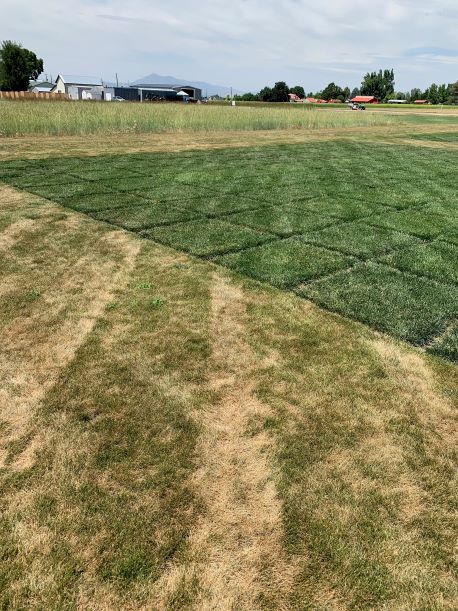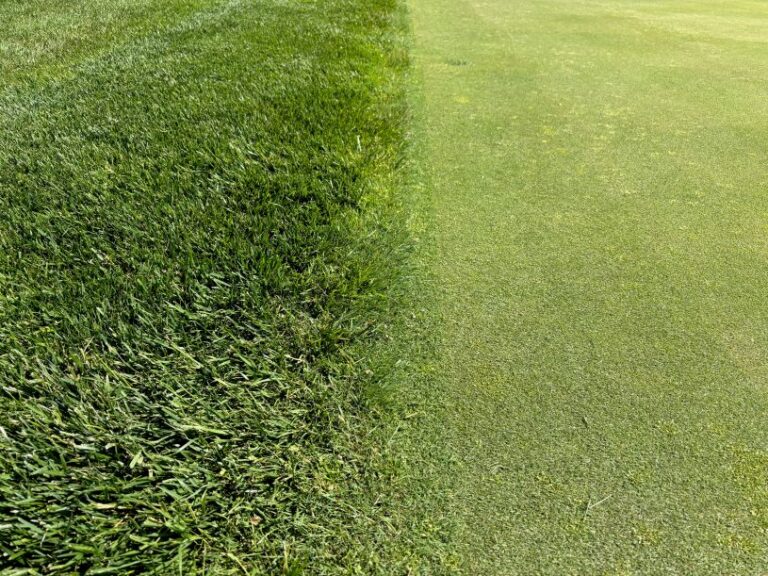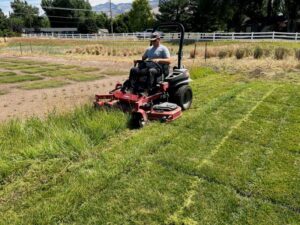By Paul Johnson, Ph.D.
“Grass grows in spite of us.”
– Donald B. White, Ph.D.
I’ve found it interesting that turfgrass management is often discussed as if it’s separate of nature. Maybe that’s because a lawn or athletic field isn’t a natural plant community. You don’t find communities of grass plants like a high-quality lawn or athletic field in nature or non-managed places.
It’s because of our non-native urban areas that lawns and turf areas as we know them are planted and managed to tolerate and thrive in the challenging environments we put them in and where we use them for our recreation.
That “separate of nature” view may be why so many think of only cookbook approaches to caring for turf – i.e., do this and you get that – not understanding nor caring to understand the plants themselves being managed, the environments that surround them, and the multitude of ways those interact. Turfgrass plants don’t live isolated, but live by the same principles by which other plant and living systems live. Turfgrass plants and communities interact and respond to the environment they are in and what we do to them in many, often fascinating, ways. We as managers and users of those turf areas interact and respond to those turf areas too.
I gained this appreciation of turfgrass communities thanks to my Ph.D. advisor and mentor, Dr. Donald B. White, who was professor in the Horticultural Science department at the University of Minnesota. Dr. White had previously published in newsletters and presentations his “Ecological Principles of Turfgrass Management,” and these principles have continually shaped how I see, research, teach and manage turfgrasses. Seeing the fields we manage in this more holistic way has helped me be more observant, curious, understanding and flexible in how I manage turfgrasses.
People may only think about natural environments when they hear the word “ecology;” however, the term describes the complex web of interactions that exist among different plants and organisms and the environment in which they live. That even includes a large urban area or stadium, as well. These principles help me teach about and find new and creative solutions to the ever-changing problems we see in athletic field management.
Principle 1: Landscape management is the management of competition between the desirable and the undesirable.
Our many management practices are meant to enhance the competitiveness of the plants we want to thrive, and discourage growth of the plants (and pests) we don’t want. Everything we do in turfgrass management relates to this, and the other principles follow. An aspect of this first principle is…
Principle 2: All plants are different in response to the major growth factors of Temperature, water, light, nutrients and air.

Cool-season grasses grow best during the spring and fall in temperate regions, so we often focus on many of the primary management practices during that time. By doing so, we favor the cool-season grasses we want, and discourage the warm-season weeds that are also present. Then the grasses are better prepared to tolerate and survive the stressful conditions of our warm to hot summers. Similarly, a golf course superintendent may reduce their phosphorous fertilizer applications to keep those levels low in the soil, which reduces the competitiveness of Poa annua seedlings. The environment, what management we do, and the species we choose all influence the community of plants — and, as a result, the competitiveness of the many organisms in our sports fields. Because of this…
Principle 3: There is an optimum set of conditions (major growth factors) under which any plant type will be most competitive.
In turf, we manage plants in a way that they aren’t growing in an optimal way but instead may be more competitive in the overall population. A good example here is mowing. My students are often surprised when I tell them that when their parents forced them to mow the lawn, they were doing possibly the most important management practice there is on turf — mowing. Turfgrasses might grow more optimally if they weren’t mowed, since mowing is a stress on the plant by removing carbohydrate-producing leaves. But much more than that, the act of mowing reduces the competitiveness of most other plants–weeds. Only a few species of plant can tolerate the frequent defoliation of mowing and grazing. However, mowing can be too much, which leads to…
Principle 4: There are limits of tolerance related to conditions under which turfgrasses grow.
If mowing gets too intense and too low, along with other conditions, the grasses may no longer be able to tolerate it. Golf course putting greens are a good example here. U.S. Open courses are known for their fast greens created by very low mowing and dry conditions. If those conditions go on for too long (thanks to an extra day of play if there is a tie at the end of regulation) or if there is excessive hot weather, those stresses may tip the conditions over the grass’s tolerance no matter the skill of the superintendent. However, those limits of tolerance don’t occur with just one of the growth factors because…
Principle 5: The major growth factors are like a web — many interactions. If one factor is changed, the response to others is altered.
Just like a spider web, a turf manager can’t change one of their management practices and have it not impact the effects of another condition. You pull on one string, they all move to some extent. Like the previous example of low mowing, that stress will likely reduce the grass’s tolerance to heat stress because of shorter roots and fewer carbohydrate resources. If you need the grass to grow more and apply more nitrogen, the turf likely will need more irrigation or water as a result. If you irrigate too much, it may impact the availability of air and other nutrients in the rootzone, reducing turf growth and competitiveness. But this principle can be a tool we use because…
Principle 6: When things are not going right, identify which factor or condition is furthest from the optimum and correct that first.
When solving a problem, it’s usually best to adjust one factor or practice at a time rather than a host of changes. If you look at your entire management program and realize that the fertilization may be too much, reducing that input may bring other factors closer to the optimum. Doing so may reduce stress from drought that is limiting. It may decrease disease pressure caused by excessive growth. Slightly raising mowing height may increase tolerance to heat and drought (that is, if the height can be increased). In turf we may not be able to alter everything, but knowing those we can alter will give us more tools to work with. This principle also provides a good lesson of going too far with a practice, because…
Principle 7: One-shot treatments often do not accumulate, but briefly move things off center. The tendency is to return to the original condition.
Thank goodness you can be away from your home for a few weeks and when you get home you can mow down the overgrown lawn — removing much more than the ideal one-third of the height – and, in most cases, it’s just fine. Likewise, one overapplication of a fertilizer might overstimulate growth, but doing it one time probably won’t cause long-lasting problems. However…
Principle 8: Constant or regular treatments result in an accumulation of effects.
If you keep mowing down turf when it’s very overgrown, the plant density will decrease and root growth and overall health will be significantly impacted. Likewise, if you continually overapply nitrogen fertilizer, the turf will become very susceptible to disease, have very shallow roots, and generally more succulent, stress-susceptible plants. In turf we tend to focus on problems but instead…
Principle 9: If things are working well, don’t fix them.
This is what Dr. White often said, and in general it may be true; but I add to this the need to keep asking questions – especially with the goal of sustainability. Unfortunately, turfgrasses are very tolerant of overwatering, for example. Is the management adequate but still excessive? Can you get the same or acceptable results with less inputs? Less is usually better when it comes to the overall health of the turf.
All of these principles encourage curiosity in managing turfgrasses and the other plant communities we care for – curiosity in what the grasses need, what we expect of them, and what they provide for us. We need more of that curiosity to understand what is actually happening and to better appreciate the amazing plant communities we trample on every day.
Paul Johnson, Ph.D., is a professor and department head in the Department of Plants, Soils and Climate at Utah State University. His professional life has been devoted to researching and teaching about turfgrass. Johnson studied turfgrass management at Iowa State University and later worked as an assistant superintendent in Omaha, Nebraska. He studied plant breeding and horticulture at the University of Minnesota for his doctorate degree, then joined the buffalograss breeding project at the University of Nebraska as a post-doctoral associate before going to Utah State University in 1998.
The author would like to acknowledge Donald White, Ph.D., for teaching him the “Ecological Principles of Turfgrass Management.”




